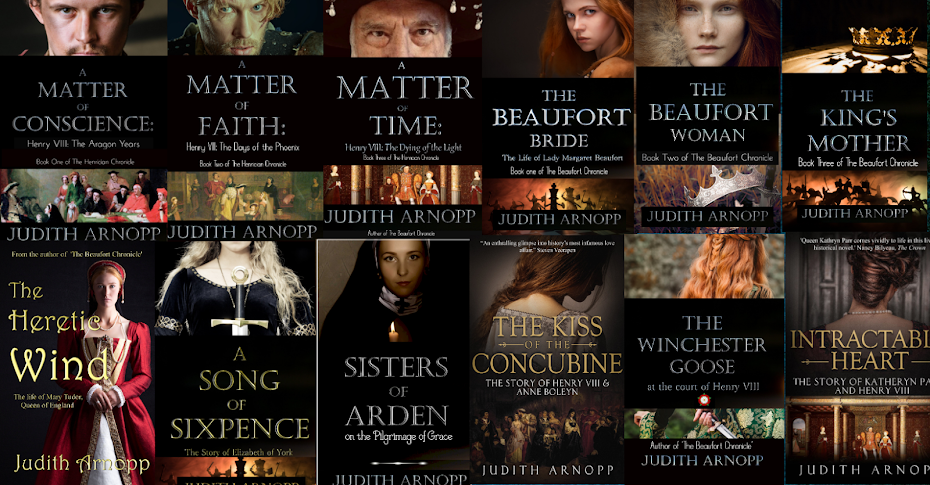By Samantha Wilcoxson
Mention the name of Elizabeth I and visions
of a glorious queen with red-gold hair immediately come to mind. She shepherds
her people and stands firm against the Spanish armada. Her devotion to her
subjects is so complete that she cannot even bring herself to find a spouse.
Long after her death, Queen Elizabeth I is adored, possibly more so than she
was during her lifetime.
In contrast, her older sister, Queen Mary I
is remembered as ‘Bloody Mary’ when she is remembered at all. The sisters
shared the auburn hair that they inherited from their father, Henry VIII, but
that is not all they had in common. A closer look reveals that Elizabeth
learned much about ruling as queen regnant from the example of her sister.
The role modelling that Mary provided for
Elizabeth began long before either of them became queen. The girls were often
part of the same household when Elizabeth was young, beginning with Mary’s
forced servitude in the infant Elizabeth’s household as part of Henry’s
striving to emphasize that it was Elizabeth who, at that time, was princess
while Mary was a bastard. By the time both girls were brought to court by
stepmother Katherine Parr, both were bastardized princesses.
Mary’s early roles in Elizabeth’s life
would have demonstrated how to be pious and submissive in the face of
adversity. Elizabeth would get a different view of what positions a woman could
fulfill when her father went to war in France, leaving Katherine as regent with
Mary at her side. Katherine Parr was an important person in the lives of these
motherless girls. She showed that a woman could order a kingdom just as well as
a household, and both girls took note.
Both Katherine and Mary offered Elizabeth
examples on the effects that the wrong marriage could have on a woman’s life.
If she were not haunted by the fact that her mother had been executed by her
father, Elizabeth need look no further than Katherine and Mary for further
reasons to remain single. Thomas Seymour, Katherine’s fourth husband, gave
Elizabeth an early lesson in flirtation, if not more, and was executed for
treason shortly after Katherine’s death following childbirth. Mary’s marriage
to Prince Philip caused an uproar of rebellion as the efforts to restore
Catholicism became fused with England’s marriage to Spain in the minds of
Englishmen.
However, Elizabeth took note of the finer
details of Mary’s reign and used them to her advantage when her turn came. While
the lack of a husband caused its own problems, not the least of which was the
end of her family’s dynasty, Elizabeth had learned from her father’s marital
scandals and the repercussions of her sister’s choice that it was safer to
remain alone. Elizabeth is famous for stating, “I have already joined myself in
marriage to a husband, namely the kingdom of England.” What is not so widely
remembered, is that Mary said almost the same thing.
In 1554, with Wyatt’s Rebellion underway,
Mary decided to address the people of London and encourage them to rise up in
her defense. She said, in part, “What I am loving subjects, ye know your Queen,
to whom, at my coronation, ye promised allegiance and obedience, I was then
wedded to the realm, and to the laws of the same, the spousal ring whereof I
wear here on my finger, and it never has and never shall be left off. . . . I
cannot tell how naturally a mother loveth her children, for I never had any,
but if the subjects may be loved as a mother doth her child, then assure
yourselves that I, your sovereign lady and your Queen, do earnestly love and
favour you. I cannot but think you love me in return.”
Elizabeth was a clever woman, better at
reading political situations than Mary ever was. She was quick to use language
and strategies that had worked for her sister, but also eager to put distance
between herself and the memory of the aged, childless queen and learn from
Mary’s mistakes.
Where Mary had seen herself as the
spiritual leader of her people, Elizabeth understood that changing times made
Head of the Church of England a difficult title to bear. Mary had believed that
it was her duty to reconcile her kingdom to Rome and her people to God, but
Elizabeth was careful to keep her faith more private than any previous ruler of
England had. She saw, as few monarchs of her day did, that religion was
becoming an issue that people were no longer united in.
Elizabeth used this difference between
herself and her sister to bolster her position. In turn, Mary’s name was
blackened. The harsh sobriquet ‘Bloody Mary’ was never applied to the devout
queen during her lifetime, but the sister who benefitted from her example also
found that she appeared more glorious if her predecessor seemed evil in
comparison. Instead of receiving credit for demonstrating that a woman could
reign, Mary became the enemy whom Elizabeth triumphed over. Yet, Elizabeth
would not have been the success that she was without the sister who paved the
way for her.
Additional Reading
Mary Tudor: Princess, Bastard,
Queen by Anna Whitelock
The First Queen of England by Linda Porter
The Children of Henry VIII by Alison Weir
Samantha Wilcoxson is the author of the Plantagenet Embers Trilogy. An incurable
bibliophile and sufferer of wanderlust, she lives in Michigan with her husband
and three teenagers. Her most recent novel, Queen
of Martyrs: The Story of Mary I was recently released and is available
in paperback and on Kindle. You can connect with Samantha on her
blog or on Facebook, Twitter, and Goodreads.
Universal
Amazon Author Link
Universal
Book Links
Plantagenet Princess, Tudor Queen myBook.to/PPTQ
Faithful Traitor myBook.to/FaithfulTraitor
Queen of Martyrs myBook.to/QueenOfMartyrs
Social
Media Links
Twitter
https://twitter.com/carpe_librum
Goodreads https://www.goodreads.com/samanthajw
Blog







